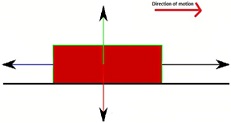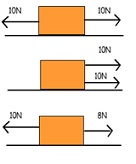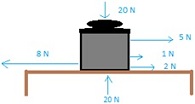Reference no: EM133570366
Term Project
Interdisciplinary Project - Math
The Project
This project is a collaborative group project designed to link the principles of mathematics with technology innovation. Each group will consist of a maximum of 4-5 students and will explore the intersection of mathematics to solve real-world problems. This project will incorporate mathematical concepts, problem- solving skills, and technological advancements to create or enhance an invention. The project's relevance to current technological trends, such as those showcased at EXPO 2020 in Dubai, will further motivate and inspire students to explore the exciting intersection of math and technology.
Project's Objectives:
1. Students will improve their research skills by finding information about their inventions, what existing technology is available, and what is unique about their creation. Briefly mention the new technology and link it to your proposed invention; if you find this difficult, talk about a recent invention and how it will revolutionize society.
2. Students will connect their research to EXPO 2020 in the UAE, or any other event, construction project, or development related to the UAE. This global event serves as a platform for showcasing numerous new innovations and inventions.
3. Students will develop research-collecting skills through APA referencing sand summary writing. In their research, they can discuss and share their opinions of different technology. They can also highlight and pick out key mathematical concepts from their sources. Research should be no more than 2 pages - facts, information, and resources (make sure it is written in your own words).
4. For references, use a minimum of 4 resources and a maximum of 10 only.
5. Students will review and edit their work, with a specific focus on mathematical accuracy, clarity, and adherence to conventions. This includes ensuring precision in mathematical notation, clarity in explanations, and correct usage of mathematical terminology and symbols.
6. Choose ONE only. Students will create either a blog, a video, a research paper, or a podcast, sharing and summarizing their mathematical research and innovative ideas. They can use the following for ideas:
- A form of a blog - an online platform and guidelines to be developed - covering all the details listed above.
- A video created with media software (voices, images and sounds included) - no more than 10 minutes.
Topic: Design and create an invention using new or existing technology.
Research mathematical-related applications in the UAE.
Steps: 1 - Determine the purpose and/or the semantic mapping of the project. 2 - Gather the material and research information.
3 - Organize the data/edit the research.
4 - Create/choose visual aids, such as a PPT presentation, media software, or a visual podcast. 5 - Final Presentation of Chosen Media and Research
Newton's Second Law of Motion Problems Worksheet
In the first set of problems below, you will be given the mass of an object and the acceleration of that object, and then will need to solve for force, using the equation F = ma. In other words, you will need to multiply the mass times the acceleration to calculate the force. Be sure to convert any mass stated in grams into kilograms, by dividing it by 1000 (moving the decimal place over three places to the left). For example, 1000 grams is equal to 1 kilogram. Be sure to state the proper units in your answer, and state each answer to the nearest tenth of a unit, to match the accuracy of the measurements.
1. An object with a mass of 2.0 kg accelerates 2.0 m/s2 when an unknown force is applied to it. What is the amount of the force?
2. An object with a mass of 5.0 kg accelerates 8.0 m/s2 when an unknown force is applied to it. What is the amount of the force?
3. An object with a mass of 1500 g (grams) accelerates 10.0 m/s2 when an unknown force is applied to it. What is the amount of the force?
4. An object with a mass of 6.0 kg accelerates 4.0 m/s2 when an unknown force is applied to it. What is the amount of the force?
5. An object with a mass of 7.5 kg accelerates 8.3 m/s2 when an unknown force is applied to it. What is the amount of the force?
6. An object with a mass of 2000 g accelerates 8.3 m/s2 when an unknown force is applied to it. What is the amount of the force?
In the second set of problems below, you will be given the force applied to an object and the acceleration of that object, and then will need to solve for mass, using the equation m = F/a. In other words, you will need to divide the force by the acceleration to calculate the mass. Show your work in the space provided. Be sure to state the proper units in your answer, and state each answer to the nearest tenth of a unit, to match the accuracy of the measurements.
7. An object accelerates 3.0 m/s2 when a force of 6.0 newtons is applied to it. What is the mass of the object?
8. An object accelerates 12.0 m/s2 when a force of 6.0 newtons is applied to it. What is the mass of the object?
9. An object accelerates 5.0 m/s2 when a force of 20.0 newtons is applied to it. What is the mass of the object?
10. An object accelerates 2.0 m/s2 when a force of 12.0 newtons is applied to it. What is the mass of the object?
11. An object accelerates 7.2 m/s2 when a force of 4.0 newtons is applied to it. What is the mass of the object?
12. An object accelerates 16.3 m/s2 when a force of 4.6 newtons is applied to it. What is the mass of the object?
In the third set of problems below, you will be given the force applied to an object and the mass of that object, and then will need to solve for acceleration, using the equation a = F/m. In other words, you will need to divide the force by the mass to calculate the acceleration. Be sure to convert any mass stated in grams into kilograms, by dividing it by 1000 (moving the decimal place over three places to the left). For example, 1000 grams is equal to 1 kilogram. Show your work in the space provided. Be sure to state the proper units in your answer, and state each answer to the nearest tenth of a unit, to match the accuracy of the measurements.
13. An object with a mass of 2.0 kg has a force of 4.0 newtons applied to it. What is the resulting acceleration of the object?
14. An object with a mass of 5.0 kg has a force of 20.0 newtons applied to it. What is the resulting acceleration of the object?
15. An object with a mass of 20.0 kg has a force of 5.0 newtons applied to it. What is the resulting acceleration of the object?
16. An object with a mass of 3.0 kg has a force of 9.0 newtons applied to it. What is the resulting acceleration of the object?
17. An object with a mass of 2300 g has a force of 6.2 newtons applied to it. What is the resulting acceleration of the object?
18. An object with a mass of 3.2 kg has a force of 7.3 newtons applied to it. What is the resulting acceleration of the object?
In the following problems, solve for the missing variable, using the two variables provided.
19. An object accelerates 8.2 m/s2 when a force of 20.1 newtons is applied to it. What is the mass of the object?
20. An object with a mass of 6.3 kg has a force of 7.1 newtons applied to it. What is the resulting acceleration of the object?
21. An object with a mass of 6.5 kg accelerates 12.3 m/s2 when an unknown force is applied to it. What is the amount of the force?
Worksheet
Problem 1:
An object is dropped from rest from a height of 100 meters. Calculate the time it takes for the object to reach the ground.
Problem 2:
A ball is thrown vertically upwards with an initial velocity of 20 m/s. How high will the ball go before it starts to fall back down?
Problem 3:
An object is dropped from rest of a building that is 75 meters tall. Calculate the time it takes for the object to reach the ground.
Problem 4:
A rock is thrown vertically downward with an initial velocity of 15 m/s. How far will it have fallen after 3 seconds?
Problem 5:
An object is thrown vertically upwards with an initial velocity of 25m/s from the ground. Calculate the time it takes for the object to reach its maximum height.
Worksheet
Solve the following questions:
1. A car of mass 1200 kg is traveling along a straight road. The driver applies a constant force of 5000 N in the forward direction. If the car starts from rest, what is its velocity after 10 seconds?
a. 4 m/s
b. 8 m/s
c. 12 m/s
d. 16 m/s
2. A 500 kg car accelerates from rest to a velocity of 20 m/s in 10 seconds. What is the net force acting on the car during this time?
a. 50 N
b. 1000 N
c. 2500 N
d. 5000 N
3. A girl pushes a 7 Kg box initially at rest. The box is accelerated at rate 0.001 m/s2 to cover a distance of 3.2 m. Calculate the final velocity of the box.
4. The adjacent figure shows the direction of forces exerted on a 3 Kg box to move it horizontally on a rough table. Name the four forces acting on the box:

Upward:
Downward:
To the left:
To the right:
5. Find the net force in each of the following:

a. :
Direction:
b. :
Direction:
c. :
Direction:
6. If the mass of the box in question above is 3 Kg, calculate the acceleration for each part.
7. Calculate the acceleration and determine its direction if the mass is 1.35 Kg.

8. When Ahmad stands on scale, he finds that his weight is 686 N.
a. Calculate his mass.
b. Calculate Ahmad's weight on Jupiter ()
9. What is drag force and how to find its direction? When does an object reach terminal velocity?
Worksheet 2
What is the area of the polygon shown below? Show your work.

Worksheet 3
Graph the following function.

Worksheet 4
Find (f + g)(x), (f - g)(x), (f o g)(x), and for f (x) = x2 + 2x + 1, g (x) = x + 3. State the domain of each new function.
Worksheet 5
1) Find (x2 + 2x - 5) ÷ (x - 1) using synthetic division
2) Find (3x3 - 2x2 - 4x + 10) ÷ (x - 2) using synthetic division
3) Find (4x4 - 6x3 + 5x2 + 2x - 10) ÷ (x + 1) using synthetic division
4) Find (4x3 - 2x2 - 4x + 10) ÷ (2x - 1) using synthetic division
Worksheet 6
1) List all possible rational zeros of f(x) = x4 - 12x2 - 15x - 4. Then determine which, if any, are zeros.
2) List all possible rational zeros of f(x) = 4x3 - 20x2 + x - 5. Then determine which, if any, are zeros.
Worksheet 7
1.) You invested $52,400 at 6% compounded annually for 5 years. What is your total return on this investment?
2.) You borrowed $10,400 for 4 years at 12.7% and the interest is compounded semiannually. What is the total you will pay back?
3.) Your 2 year investment of $5,300 earns 2.9% and is compounded annually. What will your total return be?
4.) You invested $100 at 8.2% which is compounded annually for 7 years. How much will your $100. be worth in 7 years?
5.) Your investment of $18,100 at 13.6% compounded quarterly for 71/2 years will be worth how much?
6.) You invested your allowance of $270 which gets 15% compounded annually for 3 years. How much will you have in 3 years?
7.) You gave your friend a short term 2 year loan of $43,000 at 3% compounded annually. What will be your total return?
8.) Your investment of $1,200 gets 5.1% and is compounded semi annually for 7 1/2 years. What will your $1,200. be worth at the end of the term?
9.) You borrowed $95 for 1 year at 5.2% interest that is compounded semi annually. What will you pay back in full?
10.) Your 6 and 2/3 year investment of $1,450 at 5.4% compounded monthly brought you a grand total of?